
MAR · APR · MAY 2024
Aloha HoMA Community,
THE HONOLULU MUSEUM OF ART was founded almost 100 years ago with the intention of celebrating local and global perspectives—to share Hawai‘i with the rest of the world, and to connect the rest of the world to Hawai‘i.
This spring the curatorial emphasis is firmly on Hawai‘i, putting the spotlight on island-based art, artists and collectors. We know that art by Native Hawaiian and local artists is important to you—this past fall we sent a survey to HoMA members and almost 80 percent of respondents answered “local and Native Hawaiian art” when asked to name the focus of their favorite exhibitions and programs.
Being a successful museum in the 21st century is about connecting meaningfully with our community. Our curators conceptualize exhibitions that we hope speak to you, and in which you see yourself reflected. Kapulani Landgraf: ‘Au‘a , on view through Sept. 29, is a powerful example of this. Comprised of 108 portraits, the work is a profound statement on Hawaiian identity, reflecting a painful history. It is also a work about resilience and community. Included in the series of portraits is Waikoloa Noa, who owns the Valley Health Bar up the street from the museum. It is wonderful to have a friendly neighbor featured in an artwork in the galleries.
Forward Together: African American Prints from the Jean and Robert Steele Collection , on view through Sept. 15, celebrates the gift from Hawai‘i residents and collectors Bob and Jean Steele. The couple made their gift in order to share their carefully chosen works with their adopted community, telling the important story of contemporary African American artists’ incredible contributions to visual culture.
An important milestone for the Hawai‘i community was Awaiaulu’s 2022 publication of Ke Kumu Aupuni: The Foundation of Hawaiian Nationhood . HoMA is pleased to present a companion
exhibition of works from the collection that appear in this invaluable book. We hope Hawaiian history educators bring their students to see these images that mean very different things today than they did when they were produced 150 years ago.
In April, get ready to have fun at Fashioning Aloha —a look at 90 years of aloha wear. See page 6 to read all about this look at a genre that tells a stylish story of Hawai‘i.
We hope that you are able to find the time to experience these exhibitions, and participate in the engaging related programs around them. We appreciate all that you do to make HoMA a vibrant and thriving museum that has the power to inspire and transform our community.
Warmly,
 HALONA NORTON–WESTBROOK Director & CEO
HALONA NORTON–WESTBROOK Director & CEO

2
David Hockney: Perspective Should Be Reversed Prints from the Collections of Jordan D. Schnitzer and His Family Foundation
THROUGH MARCH 10 • This major retrospective of one of the most influential British artists of our time showcases David Hockney’s iconic, inventive style. See more than 100 colorful prints, collages, and photographic and iPad drawings in a variety of media spanning six decades.
Shining Prince: The Tale of Genji
THROUGH APRIL 7 • See Helen Frankenthaler’s print series and historic Japanese paintings inspired by one of the most remarkable accomplishments in literary history— The Tale of Genji by Murasaki Shikibu.
Forward Together: African American Prints from the Jean and Robert Steele Collection
THROUGH SEPTEMBER 29 • A celebration of the museum’s major acquisition of prints from the Jean and Robert Steele Collection, which vastly increases HoMA’s representation of art by Black artists. Learn how these artists shaped 20thcentury American art and visual culture.
Ke Kumu Aupuni: The Foundation of Hawaiian Nationhood
THROUGH AUGUST 4 • This exhibition celebrates the 2022 book Ke Kumu Aupuni: The Foundation of Hawaiian Nationhood by Samuel Mānaiakalani Kamakau (1815–1876).
See the 30 drawings, prints, and paintings that appear in this important publication.
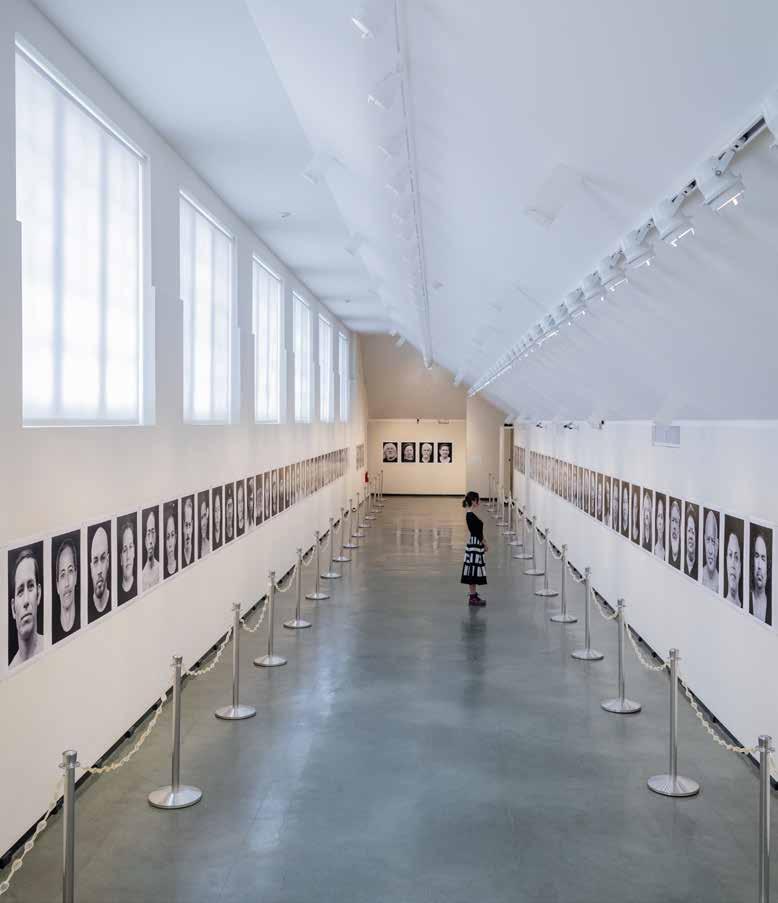
Exhibitions
Kapulani Landgraf: ‘Au‘a
THROUGH SEPTEMBER 29 • Kapulani Landgraf’s powerful photographic installation ‘Au‘a is about a collective conviction to correct a wrong. See portraits of 108 Kanaka ‘Ōiwi community leaders.
Miyabi: Renaissance of Court Culture
APRIL 18-JULY 28 • Get an intimate look at the sumptuous, nostalgic grace of Japanese culture during the Edo period, when the court looked to its Heian past for an air of refinement.
Fashioning Aloha
APRIL 12-SEPTEMBER 1 • Aloha wear is more than flowers. Find out the fascinating, diverse history of this quintessential part of island life and history, from its 1930s beginnings to the present.
Programs
Connect with museum curators, artists and creatives from Hawai‘i and around the world.

WORKSHOP
Ekphrastic Poetry: Connecting Art with Memories
SATURDAY, APR 20, 5-8PM •
KĪNA‘U COURTYARD AND GALLERIES • $35
Kanaka Maoli artist and writer Kalilinoe Detwiler takes students on an exploration of ekphrastic poetry—poetry that pays tribute to a work of visual art, like Keats’s Ode to a Grecian Urn. Respond to works from the museum’s collection with personal memories to create an ekphrastic poem, and weave your life into the greater story of Hawai‘i. Register: honolulumuseum.org/ art-classes

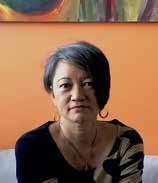
ART TALK
Community Voices: Kū I Ka Mana
SUNDAY, MAR 17, 11AM-NOON •
GALLERY 12
Artist, curator and educator Drew Kahu‘āina Broderick (far right) and artist, curator and arts organizer Noelle M.K.Y. Kahanu lead an informal conversation about the significance of the installation Kapulani Landgraf: ‘Au‘a, including its ability to inspire and challenge viewers. Note: ‘Au‘a has a slate of programs through September, see them all at honolulumuseum.org/aua

ART TALK
In Conversation: Enrique Chagoya & Robin Holder
FRIDAY, MARCH 22, 7PM •
DORIS DUKE THEATRE
Renowned artists Enrique Chagoya and Robin Holder, who contend with issues of identity and race in contemporary America, discuss the use of printmaking in the service of political, social, and economic commentary. Chagoya’s etchings are on view in Disasters of War Then and Now (through April 14) and Holder’s serigraph is an important artwork in Forward Together: African American Prints from the Jean and Robert Steele Collection (on view through mid-May). This program is made possible by the Allyn Bromley Visiting Artist Program.
4
SPRING HIGHLIGHTS

ART TALK
In Conversation: Contemporary Designers on Fashioning Aloha
FRIDAY, APRIL 19, 7PM • DORIS DUKE THEATRE
Designers Nake‘u Awai, Roberta Oaks and Kenneth Aloha Victor of Kaulua‘e talk about their start in fashion, their inspirations and how they infuse aloha into their work.

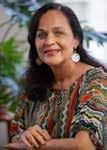

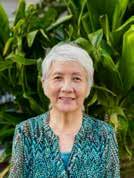

ART TALK
Kū I Ka Mana: Fearlessness in Art
SUNDAY, APR 21, 2-3:30PM •
DORIS DUKE THEATRE
As part of programming for Kapulani Landgraf: ‘Au‘a, the artist (top left) is joined by other Kanaka ‘Oiwi members of the art community to reflect upon the relevance of resistance, resilience, and courage at pivotal moments to propel and support Kanaka ‘Ōiwi art communities and creative scholarship. Panelists (clockwise from top center): Lulani Arquette, Drew Kahu‘āina Broderick, and Healoha Johnston. Moderator: Dr. Karen K. Kosasa.
5
For more events and to book tickets go to honolulumuseum.org/events .
APR 12–SEP 1, 2024
GALLERIES 27 & 28

Kaulua‘e Nupepa Long-sleeved Aloha Shirt, 2017. Private collection (L.2023-15-01).
Kamehameha Garment Company Aloha Shirt, 1960s. Gift of Linda Arthur Bradley, 2023 (2023-04-08).
‘Iolani Sportswear Hapa Jac, c. 1968. Gift of Linda Arthur Bradley, 2023 (2023-04-07).
Waltah Clarke’s Chinese Mu‘umu‘u, 1969-1970. Gift of Linda Arthur Bradley, 2023 (2023-04-10).
Alfred Shaheen Holokū, 1960s. Gift of Linda Arthur Bradley, 2023 (2023-04-06).
6 NEW EXHIBITIONS

THIS EXHIBITION is a stylish and nostalgic look at aloha wear, exploring how it has become a signifier of identity, culture, and connection to place. Fashioning Aloha showcases garments such as aloha shirts from 1930s Honolulu— when Japanese and Chinese tailors used imported printed silks and cottons for Westernstyled shirts—to locally made contemporary shirts. Highlights also include holokū (gown), mu‘umu‘u (dress), and holomu‘u (fitted dress) employing a variety of meaningful motifs.
Modern printed fabrics depicting Hawaiian themes began in the late 1930s and are still being made today. Early garments portrayed landscapes, locales, and flowers, serving as wearable postcards, a tangible and exportable symbol of aloha. Designs developed and expanded in the latter 20th century, with some reflecting cultural practices and historic events.
Representing almost 90 years of aloha wear, this exhibition focuses on some of the many fabric patterns used in Hawai‘i. Printed fabrics show the diversity of textile iconography—including flowers, Oceanic bark cloth, Tahitian pareo, Asian designs, maps, hula, music, newspapers, Hawaiian quilts, cultural implements, and royal Hawaiian regalia. The garments will be exhibited alongside works from the museum’s collection, such as a Chinese dragon robe and Hawaiian quilts, illustrating the source and inspiration for the textile designs.
The unique combination of influences, nature, trade, and historic events in our distinct location between East and West developed this special product with a global appeal. Visitors may enjoy recognizing textiles from their
own family memories or collections, saved and shared throughout the generations.
A video in the exhibition will display contemporary and vintage fashion while another will feature family photos featuring aloha wear submitted by the public. Visitors can design their own fabric motifs at an interactive station.
The exhibition includes select loans from local designers and collectors and features the museum’s recent acquisitions from the collection of Linda Arthur Bradley, Ph.D., former professor of apparel, merchandising, design, and textiles at the University of Hawai‘i at Mānoa and Washington State University.
MAJOR SUPPORT PROVIDED BY ADDITIONAL SUPPORT PROVIDED BY
Jhamandas Watumull Fund
Laura Goo
Aqua-Aston Hospitality
Honolulu Magazine
8
NEW EXHIBITIONS
The Kahala women's tunic top, late 1950s. 100% cotton poplin, with zipper in back. Courtesy of Kahala Sportswear (L.2023-16-04).
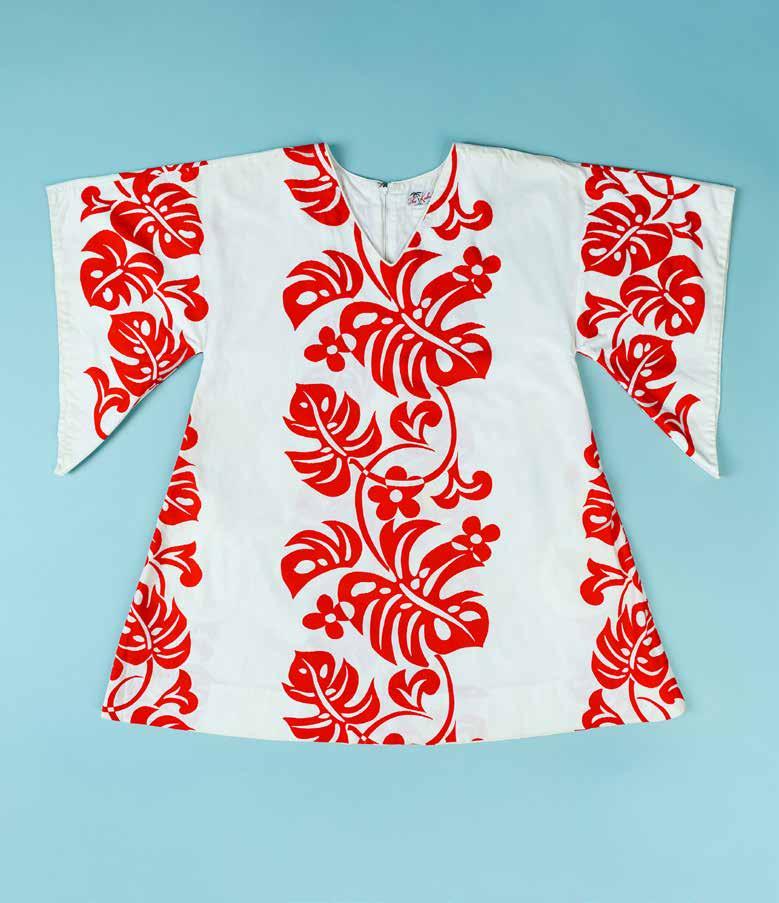

Miyabi: Renaissance of Court Culture
APR
8,
Miyabi , defined as "grace" or "refinement," was a central aesthetic concept in court culture during the Heian period (794–1185) in Japan. When the samurai gained dominance during the following Kamakura period (1185-1333), they eclipsed the social standing previously held by the emperor and the aristocracy. During the later Edo period (1615–1868), the samurai held political and economic authority, but lacked the refinement and cultural influence of their predecessors. This brought about a desire to revive courtly elements of Heian-period culture. HoMA's outstanding collection of Japanese art contains many rare and fascinating objects that reflect this Heian “Miyabi” revival and are the subject of this spotlight exhibition.
The enthusiasm for court culture eventually spread across different social classes during the Edo period’s 250 years of peacetime. This was manifest in various artforms, from painting and printing to poetry
and fashion. While only aristocrats composed waka (classical Japanese poetry) in the Heian period, during the Edo period poetry was practiced by samurai, merchants and even courtesans. As the standard of living improved, women from the samurai class and merchant families were able to collect sumptuous kimonos, while painters, previously supported solely by the imperial court and Tokugawa shogunate, expanded their client bases and took commissions from a wide range of patrons. Wider availability of woodblock-printed books led to increased literacy rates and exposure to elements of court culture.
This exhibition offers an intimate and sumptuous look at Japanese culture, the centuries-long impact of court aesthetics, and how changes to these aesthetics over time reflect larger societal movements created by increasing numbers of people participating in and influencing Japanese culture.
10 NEW EXHIBITIONS
18–JUL
2024 • GALLERY 3
The Drama of Light and Space: Landscapes
by Hiroshige

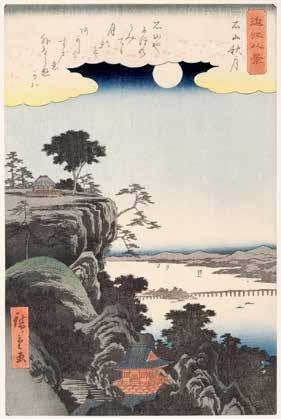
MAY 26–AUG 18, 2024 • GALLERY 21
Utagawa Hiroshige’s (1797–1858) skill as a woodblock print designer is evident in his brilliant reinvention of pictorial themes. Presented here, for example, are two versions of Eight Views of Ōmi (Ōmi Hakkei) , a traditional series of landscape images surrounding Lake Biwa in Ōmi Province (Shiga Prefecture). In one set dating to around 1834, the artist presents the landscapes in horizontal format, conveying a sense of stillness. By contrast, a vertically oriented version published approximately twenty-three years later feels far more dynamic. What doesn’t change is the artist’s ability to achieve intense pictorial depth through his use of sweeping diagonals and tonal gradation. Not surprisingly, such landscape prints dominated the field of ukiyo-e throughout the Hiroshige’s lifetime.
FUNDING FOR THIS EXHIBITION IS PROVIDED BY THE ROBERT F. LANGE
LEFT Utagawa Hiroshige (1797–1858, Autumn Moon at Ishiyama. From the series Eight Views of Ōmi. Japan, Edo period (1615–1868), c. 1834. Woodblock print; ink and color on paper. Gift of James A. Michener, 1991 (23214).
RIGHT Utagawa Hiroshige (1797–1858), Autumn Moon at Ishiyama. From the series Eight Views of Ōmi Province. Japan, Edo period (1615–1868), c. 1857. Woodblock print; ink and color on paper. Gift of James A. Michener, 1991 (23203)
FAR LEFT Kanō Kōi (d. 1636), Birds and Flowers. Japan, Edo period (1615–1868), early 17th century. Pair of six-panel screens; ink, color, and gold on paper. Gift of Anna Rice Cooke, 1929 (4150).
11
FOUNDATION
GALLERY HIGHLIGHT

12
Views from Within: Photographs from the Collection
APR 18–JUL 28, 2024 •
OPPOSITE Diane Arbus (American, 1923–1971).
Xmas tree in a living room in Levittown L.I 1963, 1963 (printed 1969–70). Gelatin silver print. Gift of Jeffrey Fraenkel, 2020 (2020-02-01).
Brett Weston (American, 1911–1993). Interior Japan , 1970. Gelatin silver print. Gift of Brett Weston Archive, 2003 (27765).
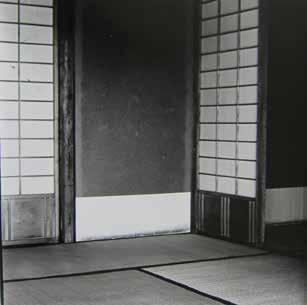
This selection of eleven photographs, drawn from the museum and community collections, brings together images depicting intimate interior spaces—both public and private. Details such as the television set, plasticcovered lamp shade, and fringed upholstery in Diane Arbus’s un-romanticized image Xmas tree in a living room in Levittown, L.I. (1963), clearly reference a particular time and location in America’s first suburb in Long Island. Other images, like Brett Weston’s Interior, Japan (1970) emphasize formal composition and design through a focus on the diagonal lines and varied tones of gray in the sliding doors and tatami mats of a Japanese house. Whether exuding a sense of peaceful solitude or an undercurrent of domestic unease, these everyday objects, personal moments, and overlooked spaces serve as reminders that beauty may be found in the experience of quiet moments, if we simply take the time to pause for a closer look.
13
GALLERY HIGHLIGHT
GALLERY 9
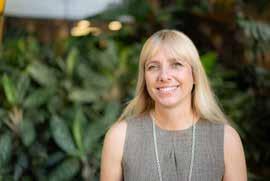
Good taste: Jenny Grondin
If you’ve noticed subtle changes at the HoMA Café, it’s the result of new Head of Food & Beverage Jenny Grondin. The seasoned restaurant and retail professional brings a wealth of experience to the museum’s fantastic food and beverage team. She is perhaps best known as half of the team behind the late, beloved Chinatown restaurant Grondin French Latin Kitchen.
Before launching the lauded eatery in 2013 with her husband David Segarra, the pair were part of the group that opened celeb chef Zak Pelaccio’s popular Fatty Crab and Fatty ‘Cue restaurants in New York City and St. John, Virgin Islands. She has also held positions at the Honolulu Coffee Company and Kahala Hotel & Resort.
The move to HoMA puts Grondin back in touch with one of her professional loves—art. She managed the Tracy Williams Ltd. Contemporary Art gallery in New York City for seven years, working with artists, curators and collectors.
“I see culinary as complimenting the museum— good food and service is an added experience to the art,” says Grondin. “It’s the best of both worlds.”
Now she makes a great team with HoMA Café Chef Ben Abes and the rest of the kitchen staff, and they are busy collaborating on future fun and delicious offerings at the HoMA Café and the Coffee Bar. Look out for a new emphasis on the seasonal.
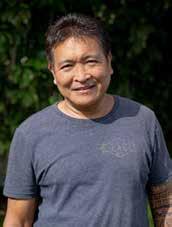
Marlon Peralta: 30 Years of HoMA
Marlon Peralta has been keeping the museum looking good since 1993. On Dec. 6, he celebrated his 30th anniversary with HoMA. For his first eight years with the museum, he worked on the Art School grounds. Today he focuses on the museum’s courtyards and oversees the koi pond in the Chinese Courtyard. During his time here, Peralta joined the National Guard and served two tours of duty in Iraq. In 2017, he became a homeowner, buying a house with his son Carlone.
Born in Hawai‘i and raised in the Philippines, Peralta returned to O‘ahu in 1992 a married man with two children. His landlord at the time happened to also be part of the museum’s ground maintenance crew. He was about to retire and suggested that Peralta apply for his position. Peralta reveals his long HoMA career had a rocky start. “They gave me a big project, cutting the tall mock orange hedge around the Art School down to four feet, by myself. I almost quit,” he says smiling. Luckily for the museum he took on the challenge.
Also reaching a milestone recently is preparator Spenson Donre, who has been with HoMA for 35 years. HoMA thanks both men for all they do for the museum.
14 MUSEUM NEWS

Composer Paul Cosme: Art Inspires Art
In spring 2023, composer Paul Gabriel L. Cosme visited the Honolulu Museum of Art to see Rebecca Louise Law: Awakening , at the invitation of museum docent Virgie Chattergy. Cosme was in his first semester as a graduate student in music composition at the University of Hawai‘i at Manoa. He had been tasked with writing a largescale piece for his masters degree and had been mulling over concepts. Following the museum tour, he reveals, “I told Virgie, ‘I think I have my idea for my masters thesis.’”
Following a long musical lineage of composers inspired by visual art—such as Claude Debussy and Monet’s paintings—over the course of almost a year Cosme created the orchestral piece A Stranger in a Festival of Spirits .
“It’s really an experience,” says Cosme says of Law’s work. As opposed to a painting that one can theoretically capture in a second, he explains that the installation comprised of a million pieces of flora unfolds the way music does—linearly through time. “In a way it was a synesthetic experience, you don’t just see it, you also smell it, sometimes it feels tactile even if you don’t touch it, because you’re familiar with the flowers. For me as a musician I can also hear it, color evokes particular sounds.” See an expanded version of this story at honolulumuseum.org/stories
H o MA SHOP: ODE TO HAWAI‘I ARTISTS
Now available in the HoMA Shop is In the Studio: Conversations with Hawai‘i Artists ($28). Photographer and designer Sachi Mura teamed up with writer Chris Oliver to produce this beautiful little book that takes the reader into the studios of 22 artists, based on O‘ahu and Hawai‘i Island, revealing a creative world that is deep, and wide and tall. From Mary Mitsuda and John Koga to Leland Miyano and Jinja Kim, the artists featured have all had enduring careers, and Mura and Oliver offer us an intimate glimpse of their process. HoMA insider note: Former staff photographer Shuzo Uemoto is in the mix!


LOWER YOUR BLOOD PRESSURE— TAKE AN ART CLASS!
Next registration is May 15
Studies show that the act of making art is like meditation—you relax, tension fades, and you have fun! Summer term classes run from July 11 to Sept 15. Take a single two-hour drawing class for a taste or get your hands dirty for 10 weeks of ceramics. All ages welcome. No experience needed! HoMA Art School has something for the learner in all of us. honolulumuseum.org/art-classes
15
Photo credit: Mai Moua Thao
Chef Mavro trades knives for brushes

Each summer, acclaimed Hawai‘i chef George Mavrothalassitis, aka Chef Mavro, heads with his wife Donna Jung to the south of France. Originally from Marseille, he generally enjoys good food, family and friends on vacation. This year, he was also busy painting.
During the pandemic lockdown, the newly retired Mavrothalassitis started a project. A lifelong lover of French poetry, he handcopied his favorite poems, such as “Il y a” by Guillaume Apollinaire, into a notebook. He then sketched works by artists such as Picasso to accompany the poems. An engineer by training, the chef is a proficient draughtsman, and eventually wanted to add color to his book. “But I realized I had no clue about it.”
So he took a HoMA Art School class. He started with two sketching-in-the-galleries sessions with instructor Mark Norseth. Then artist and friend Meleanna Meyer gave Mavrothalassitis a watercolor kit. He fell in love with the transparency of the medium and his wife, whose mother volunteered at the school years ago, signed him up for a 10-week watercolor class with instructor Anthony Lee.
Mavrothalassitis loves the class format. “For retired people like me, it is great to meet young people,” he says. “And it is always very positive.”

He finds Lee’s demonstrations of technique to be “priceless. When Anthony paints, it answers all my questions. I am waiting like crazy for his next class.”
This past September to November was the first time he painted in France with all his equipment.
“I am living my painting,” he says. “I like to paint something I love, somewhere I know,” he says, which is why he captures spots like Plage des Ondes—reminding him of when he would attend Antibes’ Jazz à Juan music festival as a teenager.
He has even converted his guest bedroom into a studio. “Painting is pure meditation,” he says. “I relax so much I don’t see the time flying. I stop when it gets dark sometimes.”
A longtime supporter of the museum as a chef donating time and talent to past fundraising events such as August Moon, Mavrothalassitis finally has the time to explore the galleries as a member. “I have more and more pleasure visiting the museum,” he says. “There are a lot of fascinating things happening.” His latest discovery is the India Gallery, especially the 18th-century miniature watercolor paintings on view. “My god I love it. Suddenly a gallery that we didn’t notice much has became one of our favorites…until next time.”
16 MEMBER SPOTLIGHT
The Power of Partnerships: First Hawaiian Bank

Founded in 1858, First Hawaiian Bank is the islands’ first and largest financial institution. Its deep community roots make it a leader in corporate philanthropy and reinvesting in the local economy. FHB also emphasizes talent development as part of its internal culture, offering online learning, an Emerging Leaders Program, and a Women’s Leadership Forum, among other programs. It also has a long history of supporting the arts in Hawai‘i, and for years worked with the Honolulu Museum of Art to program its First Hawaiian Center art gallery.
Those twin qualities makes First Hawaiian Bank a natural partner for the the museum’s Ipu Kā‘eo Internship Program. Launched last year as an opportunity for on-the-job training and education for the museum-curious, the eight-week program welcomed its first cohort in the areas of Curatorial, Collections, the Lending Collection, and the Robert Allerton Art Library. One of the group, Dala Alhindi, (above) is now the Member and Donor Services Assistant.
“First Hawaiian Bank is honored to contribute to the Ipu Kā‘eo Internship Program at the Honolulu Museum of Art, reflecting its commitment to nurturing local talent and fostering cultural enrichment,” says Executive Vice President and Chief Marketing Officer Bill Weeshoff. “We believe in the power of the arts to inspire and unite communities. Our support stems from the belief that investing in these programs not only empowers aspiring individuals but also strengthens the tapestry of our cultural heritage.”
HoMA is excited to receive applications for its second round of internships this summer, thanks to the support of First Hawaiian Bank.
Those interested in the program can visit honolulumuseum. org/ipu-kaeo-paid-internship-program.
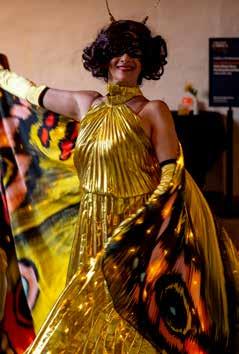
Avant Garden blooms May 4
HoMA’s one-night arts festival returns with a riot of dance, music, and art in every nook and cranny of the museum on May 4—with a Fashioning Aloha twist. For more information go to honolulumuseum.org.
CORPORATE SPOTLIGHT
PRINTS FROM THE COLLECTIONS OF JORDAN D. SCHNITZER AND HIS FAMILY FOUNDATION
David Hockney wasn’t at the Nov. 17 opening reception for this impactful exhibition, but his close friend Doug Roberts FaceTimed with the artist from the gallery, so Hockney, all the way in Normandy, France, could see what it looked like. Jordan Schnitzer was in attendance with his family, along with Hockney’s friends Kimberly Davis, director of LA Louver Gallery, and Hockney studio director Shannon Kelly. The three of them regaled fellow guests with tales of Hockney. The scale and scope of the show had visitors in awe. The museum thanks Jordan Schnitzer for his generous support of the exhibition.


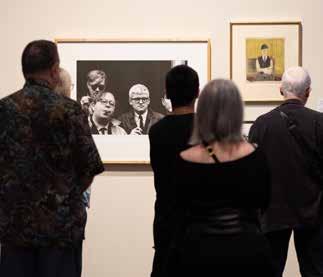
18
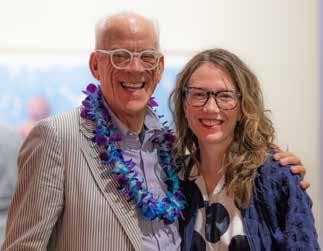
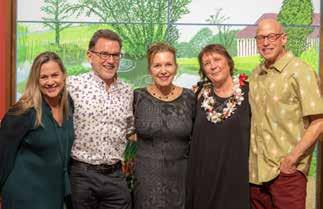


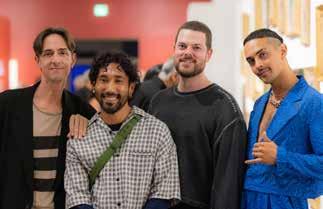
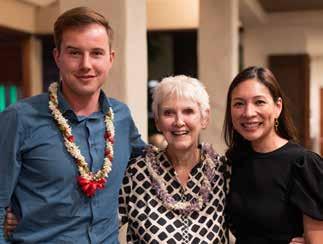
19
OPPOSITE PAGE, TOP: Catherine Whitney, Assistant Curator of Contemporary Art Katherine Love, Director and CEO Halona Norton-Westbrook and Jordan Schnitzer. THIS PAGE clockwise from top left, Doug Roberts and Shannon Kelly • Trustee Mike Watanabe • Donnie Cervantes, Mitchell Kuga, Adam J. Kurtz and Hercules • Stign Spaas, Trustee Sharon Twigg-Smith and Margie Jacinto • Shiloh Perkins and Kenyatta Kelechi • Diane Bendix Wahl, Greg Wrenn, Cathy Cooke, Kimberly Davis and guest.
Kama‘āina Christmas 2023
MAHALO NUI to everyone who made Kama‘āina Christmas 2023 a sparkling gem of the holiday season! Featuring designs and decor reminiscent of the artistic style of David Hockney, whose prints were on view in Galleries 27 and 28, the evening intertwined with the world of art. This connection was evident in everything from the seating alcoves inspired by Hockney’s In the Studio, December 2017 to the art-centric live auction items. The event’s hallmark is the opportunity to dine in the galleries, where attendees enjoyed a lavish three-course dinner by Chef Roy Yamaguchi. Post-dinner merriment saw people dancing to the jazzy tunes of Nueva Vida.
Funds raised at Kama‘āina Christmas directly support the museum’s mission, and HoMA is deeply grateful to everyone who contributed to last year’s event—table purchasers, wish tree donors, live auction participants, guests and museum staff.
Mark your calendars for Kama’aina Christmas on December 14, 2024. To secure a table, contact Jessica Welch at 808-532-8715 or jwelch@ honolulumuseum.org. Your presence will make this festive event even more special!

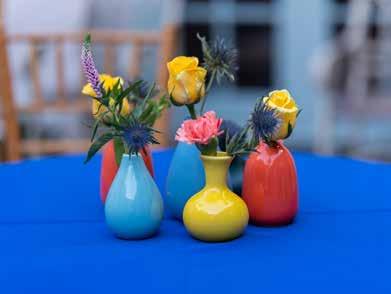

20





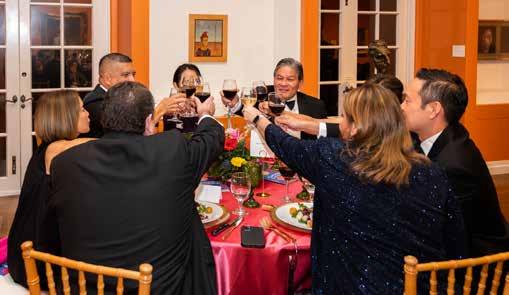
21
Clockwise from top right: Chris and Kelly Huang, Board of Trustees Chair
Josh Feldman, Trustee Amber Strong Makaiau, Jarad Makaiau • Arnold Baptiste, Ed Sultan, Samantha Koslow of Christie's and Jim Tucker • The Hawai‘i Pacific Health table makes a toast • Ann and Philip Wright • Nueva Vida
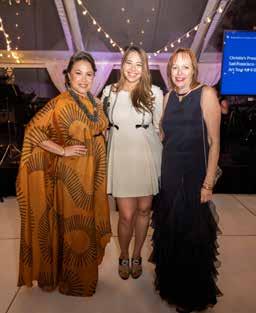
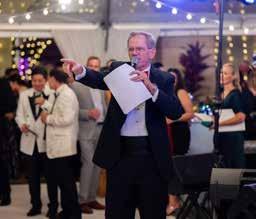





22
TABLE PURCHASERS
PLATINUM BENEFACTORS
Bank of Hawai’i
Christmas Lovers Table
Linda & Robert Nichols
Jay Shidler on behalf of the Shidler College of Business
Tori Richard, Ltd.
GOLD BENEFACTORS
First Hawaiian Bank
Easton & Nedra Manson
David and Kathy Moore and Friends
Judy Pyle & Wayne Pitluck
Jean E. Rolles
Kelly & Christopher Huang, Karen & Mark Polivka, Alexa & Kelly Sueda, Rae & Edward Sultan
Shangri La Museum of Islamic Art, Culture & Design
SILVER BENEFACTORS
Margery Bronster & Ken Robbins
Cartier
CHANEL
Conley Family Foundation
Dr. & Mrs. Philip Wright and Dr. & Mrs. Worldster Lee
Hawaiian Host Group
Hawai’i Pacific Health
Howard Hughes / Ward Village
The Johnson Family
The Rice Partnership
The Sullivan Family of Companies
Sharon Twigg-Smith
JD & Julie Watumull
DONATIONS
Julian Keikilani Ako
Joji & Arnold Baptiste
Rajiv & Ritu Batra
Scott Bradley
Priscilla Growney
Akemi & Misako Kurokawa
Shirley Masuyama
David & Kathy Moore
Noreen & David Mulliken
Dr. Elahe Omidyar Mir-Djalali
Justine Stamen Arrillaga
Kelly & Alexa Sueda
Barbara Treat
Jeffrey & Lynn Watanabe
Mike Watanabe & Lia Chee



23
OPPOSITE PAGE, clockwise: Meli James, Emily Fukunaga and Margery Bronster • Stephanie Johnson and friend • Kevin Sugimoto and Erica Au • Ryan and Ruth Shontell, Danielle Zalopany and Berkley Spivey • Ward Village and Linda and Robert Nichols tables in the Impressionism gallery • Roy's surf and turf • Auctioneer Eric Schiff
THIS PAGE, top to bottom: Wayne Pitluck and Judy Pyle • The J.D. and Julie Watumull table • Charlene and Terence Young
Corporate partners
FOUNDER ( $100,000 AND ABOVE)
DIRECTOR ($50,000–$99,999)

CURATOR ($25,000–$49,999)
24
Philanthropic Support
JANUARY 1, 2023-JANUARY 30, 2024
The museum is deeply grateful to these foundations, businesses, individuals and governmental agencies for their generosity and commitment to the museum.
$100,000 AND ABOVE
Robert Allerton Trust
City & County of Honolulu
Cooke Foundation Limited
Doris Duke Foundation for Islamic Art
H. T. Hayashi Foundation
$50,000–$99,999
Atherton Family Foundation
Allyn Bromley & Brian Baron
Susan & Stephen Chamberlin
Josh & Lori Feldman
$25,000–$49,999
John A. Anzalone Charitable Trust
Rajiv & Ritu Batra
Cartier
Herb & Nancy Conley
Harrison R. & Dorothea S. Cooke Trust
Dorothea Sloggett Cooke Foundation
$15,000–$24,999
Margery Bronster
C.S. Wo & Sons
Frederica Cassiday
CHANEL
Priscilla Growney
Hawaii Pacific Health
Lawrence M. Johnson
$10,000–$14,999
Arnold & Joji Baptiste
Laura Goo
Michelle & Peter Ho
Kinjiro & Eiko Moriguchi Fund
Henry Koszewski
Lynne Johnson & Randy Moore
Robert F. Lange Foundation
Jack & Marie Lord Trust
E. A. Michelson Philanthropy
National Endowment for the Arts
Carroll Leilani Schuman Trust
Jay & Wallette Shidler
Estate of Nancy L. Skelsey
Historic Hawaii Foundation
John R. Halligan Charitable Fund
The Kosasa Foundation
Linda & Robert Nichols
Peter G. Drewliner Foundation
Mark Fukunaga
John Chin Young Foundation
Ian Lind & Meda Chesney-Lind
Flora Ling & Paul Sturm
Judith D. Pyle & Wayne Pitluck
Diane Koch-Weser
Sheree & Levani Lipton
Easton & Nedra Manson
Rick & Denise McGeary
David L. & Kathy Moore
Ohuokalani Charitable Foundation
The Arthur and Mae Orvis Foundation
Sharon Twigg-Smith Jhamandas Watumull Fund
Jean E. Rolles
Michael Watanabe & Lia Chee Watanabe
J.D. & Julie Watumull
Eva & William Price
Estate of Robert C. Weible
Jordan Schnitzer
Anne & Philip Wright
The Rice Partnership
James H. Soong
Edward & Rae Sultan
Ruedi F. Thoeni & David B. Franklin
25
Honolulu Museum of Art
Director & CEO
Halona Norton-Westbrook
Board of Trustees
Chair
Josh Feldman, Chairman
Vice President
Kaili Chun
Trustees
Julian K. Ako
Rajiv Batra
Mark H. Fukunaga
Priscilla Growney
Ella Qing Hou
Emeritus Trustees
Robert R. Bean
Mark Burak
Walter A. Dods, Jr.
Cecilia Doo
Helen Gary
Allison Gendreau
Elizabeth Grossman
Alice Guild
Toshio Hara
Stephanie Hee
Vice Chair
Mike Watanabe
Secretary
Amber Strong Makaiau
Treasurer
Avi Mannis
Noreen Mulliken
Judith Pyle
Catherine Schultz
Robert Steele
Kelly Sueda
Sharon Twigg-Smith
JD Watumull
Kitty Wo
Michelle Ho
Michael Horikawa
Lynne Johnson
Robert S. Katz
Akemi Kurokawa
Violet S.W. Loo
Watters O. Martin, Jr.
Patricia J. O’Neill
Cherye Pierce
James F. Pierce
Duane Preble
Jean E. Rolles
Jay H. Shidler
Charles Sted
Charles M. Stockholm
Donna Tanoue
Ruedi Thoeni
Indru Watumull
Charles R. Wichman
Editor: Lesa Griffith
Design Director: Anjali Lee
Photography: Alec Singer
900
Printing & mailing:
Edward Enterprises, Inc.
©2024 Honolulu Museum of Art, All rights reserved.
26
96, No. 2, HoMA magazine is published as a benefit for the entire community:
Vol.
of
Honolulu Museum
Art
South Beretania Street
Honolulu, Hawai‘i 96814
 Kapulani Landgraf: ‘Au‘a: Kumu Māpuana de Silva and Hālau Mōhala ‘Ilima at the opening reception
Kapulani Landgraf: ‘Au‘a: Kumu Māpuana de Silva and Hālau Mōhala ‘Ilima at the opening reception
900 S. Beretania St. Honolulu, HI 96814 808.532.8700
Wed, Thu & Sun • 10am–6pm Fri & Sat • 10am–9pm honolulumuseum.org #MyHoMA

Nonprofit Organization U.S. Postage PAID Honolulu, Hawai‘i Permit No. 119
COVER From Fashioning Aloha : Alfred Shaheen Holokū (detail), 1960s. Gift of Linda Arthur Bradley, 2023 (2023-04-06).




























































 Kapulani Landgraf: ‘Au‘a: Kumu Māpuana de Silva and Hālau Mōhala ‘Ilima at the opening reception
Kapulani Landgraf: ‘Au‘a: Kumu Māpuana de Silva and Hālau Mōhala ‘Ilima at the opening reception